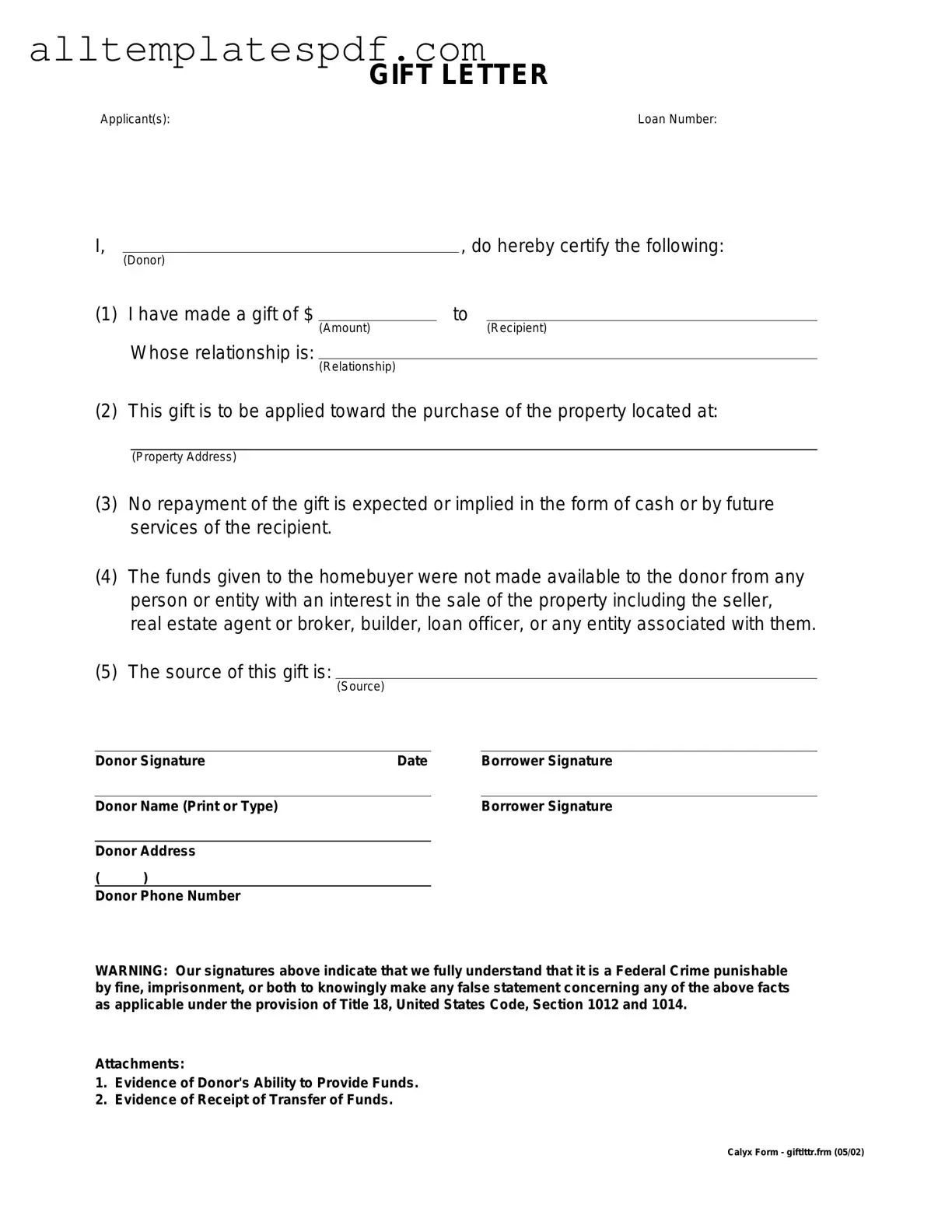Filling out a Gift Letter form can seem straightforward, but many people make common mistakes that can lead to delays or complications. One frequent error is not including all required information. Each section of the form must be completed accurately. Omitting details such as the donor's address or the recipient's relationship to the donor can raise red flags for lenders.
Another mistake is failing to provide a clear statement about the nature of the gift. The form should explicitly state that the funds are a gift and not a loan. If the language is ambiguous, it could cause confusion or lead to scrutiny from financial institutions.
Many individuals also neglect to sign the Gift Letter. A signature is crucial, as it signifies the donor's intention to give the funds without expecting repayment. Without this, the letter may be deemed invalid, jeopardizing the transaction.
Inaccurate dates are another common pitfall. The date of the gift should reflect when the funds were transferred or are intended to be transferred. Incorrect or inconsistent dates can create doubts about the legitimacy of the gift.
People often forget to include the source of the funds. Lenders may require an explanation of where the gift money originated. Providing this information helps to establish the legitimacy of the gift and can facilitate the approval process.
Additionally, some individuals mistakenly use vague language. Instead of stating the exact amount of the gift, they may write "approximately" or "around." This lack of specificity can lead to complications, as lenders prefer clear and precise information.
Finally, failing to consult with a professional can be a critical error. Many people overlook the importance of having their Gift Letter reviewed by a lawyer or financial advisor. This oversight can result in missed opportunities for clarity and compliance with legal standards.
